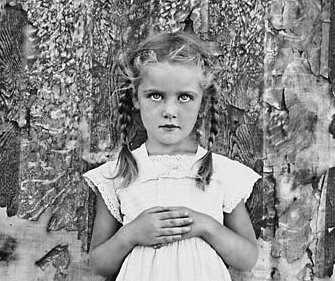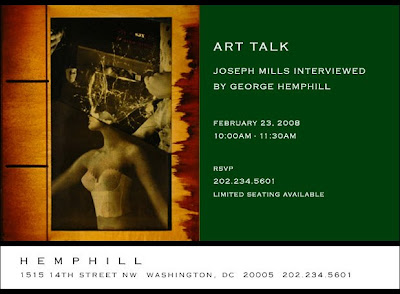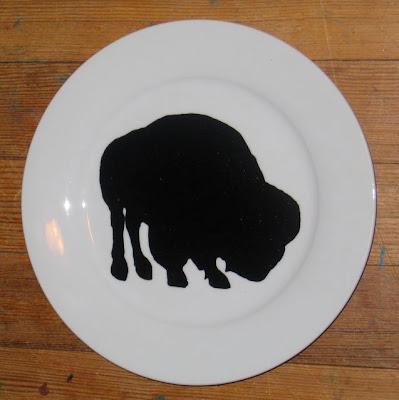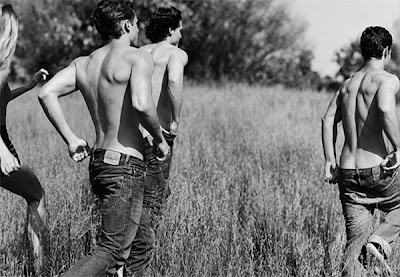"Frida and Me - Common Threads," at Projects Gallery
"Frida and Me - Common Threads," currently on display through February 23, 2008 at Projects Gallery in Philadelphia, showcases the work of four contemporary Philadelphia area artists of Latina/Hispanic heritage.
Organized by Helen Meyerick, Project's director, as a prequel and inspired by the massive Frida Kahlo exhibition which opens at the Philadelphia Museum of Art on Feb. 20, this interesting exhibition gives these four local artists an opportunity to display work which although not executed in a "Kahlo style," nonetheless touch on many of the issues of culture and identity and iconic portraiture that Frida Kahlo so successfully delivered through her own work in the last century.
The exhibit features work by Doris Noguiera-Rogers, Michelle Angela Ortiz, Marilyn Rodriguez-Behrle and Marta Sanchez. All four artists work in radically different styles and media, but all four manage to find -- at least in their words -- a thread back to Kahlo as a source of inspiration.
Marilyn Rodriguez-Behrle mixed media works on found objects -- and paper bags affixed in some cases to what appears to be some form of tree bark -- at first appear to fit neatly the category of "outsider art."
That is until one starts gathering information about the artist and her environment, and we find out that there's more than that.

Sacred Haunting Images VI, Mixed Media on Paper Bag
by Marilyn Rodriguez-BehrleThe images, such as
Sacred Haunting Images VI, are harsh and disturbing, and often done in the iconic portraiture composition of Kahlo's best-known works. But that's where the visual relationship ends and Rodriguez-Behrle's talented vision takes over. In this artist's works, everything matters and everything tells a story and is related to itself -- like a recursive sequence of art.
Rodriguez-Behrle works in a psychiatric medical environment, and the imagery of her works is directly influenced and stamped by her experiences with patients and co-workers. Even the substrate is related to her environment: the bags upon which she paints are the bags given to patients when they check in and out to contain their personal property.
It's a fascinating mixture of additional hints that she offers the viewers; in her work there are clear signs of religious portraiture, evidenced by the gold leaf background of several of the images. The use of bark immediately reminded me of some of the
Santeria pieces of Ana Mendieta, and together the two seemed to cement the fact that perhaps Rodriguez-Behrle is subconsciously (or on purpose) elevating her subjects to a higher place in her canon.
Although the cultural backgrounds of the four women on this show are different (as I recall Puerto Rican, Colombian, Argentinean and Mexican-American), it was easy to pick the powerful influences of Mexican art upon Marta Sanchez.

La Virgin y Las Corpus Oil and enamel on metal
by Marta SanchezPainting on metal is a traditional Mexican media, and for many years Mexican artists painted -- and continue to do so -- religious
retablos on tin, often by taking a tin can, cutting it open, hammering it flat and then painting or cutting it into a religious portrait.
Sanchez carries the
retablo tradition to the 21st century, elevating it both in scale and in imagery. Raised on the Texas side of the Mexican border, her works are full of narrative imagery and powerful colors influenced both by her childhood memories and the cultural ties to a Mexican palette. In
La Virgin y Las Corpus we are flooded with narrative imagery: we see the iconic Virgin as the central focus of the piece, surrounded by a swirling world of color, information and history. The train that goes back and forth between Mexico and the US is there; so is a man dancing at a wedding - or is it a young girl's
"quince" celebration? Is that Diego Rivera poking his
"El Sapo" face at the top of the painting?
It has been said by many that Argentina, as a nation, belongs more in Europe than in South America, and that complex and diverse nation is home not only to the largest Italian migration in the world, but also home to more Cymri people than Wales. In Doris Nogueira-Rogers' works more of an European footprint -- than a Latin American one -- emerges.
It's OK; Frida Kahlo was three quarters European and one quarter Mexican, but no one has ever worn her Mexicanity more furiously and proudly than
La Kahlo.

Of Lace and Layers VII, mixed media on paper
by Doris Nogueira-RogersDoris Nogueira-Rogers' contributions to the exhibitions are coolly crafted and beautifully presented - they also walk a different path from an already diverse group, perhaps aiming more to an interest in pattern and color than in narrative and information.
Let me not mix words here: the stand-out in this exhibition is Michelle Angela Ortiz.

La Madre, La Hija, Esperito Buscando Acrylic on wood
by Michelle Angela OrtizIn her large triptych
La Madre, La Hija, Esperito Buscando, Ortiz flexes not only superbly honed painting skills, but also succeeds in bringing together a marriage of the already discussed religious and iconic portraiture that tie her work to both Kahlo and a Latin American culture, to a contemporary dialogue.
The generations of her family are represented: we see her mother and her grandmother and also Ortiz. The older generations offer gifts to the viewer in their hands, while Ortiz's hands, held in the same position, await her gifts or perhaps her destiny.
It's also a story of family strength and power; these are not supplicants, but strong women with strong faces, and Ortiz's face, more than the others, also show a proud footprint of native indigenous bloodlines taking over, through the generations, from the invading European genes.
She awaits her gifts, but will not beg for them; she will make her own destiny.















